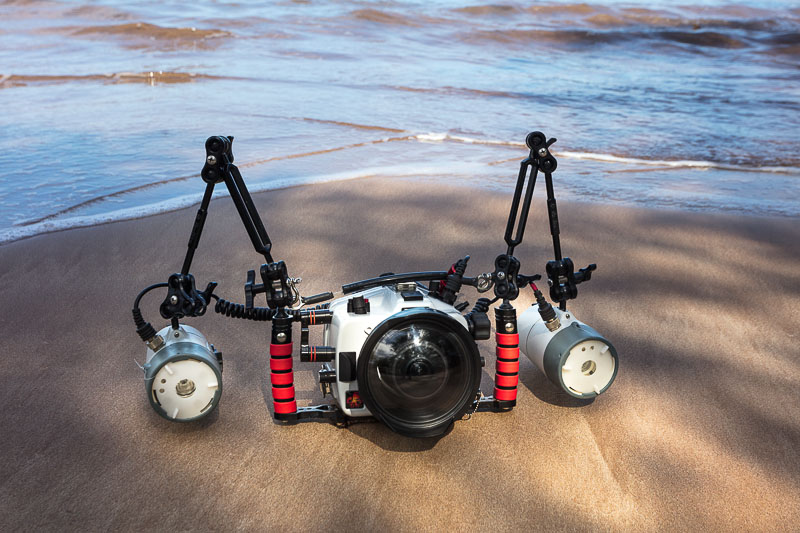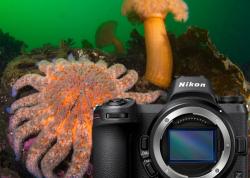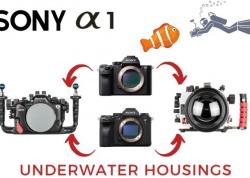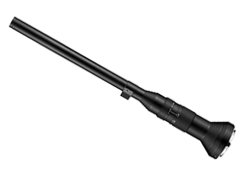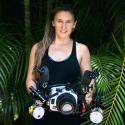Nikon D780 Review
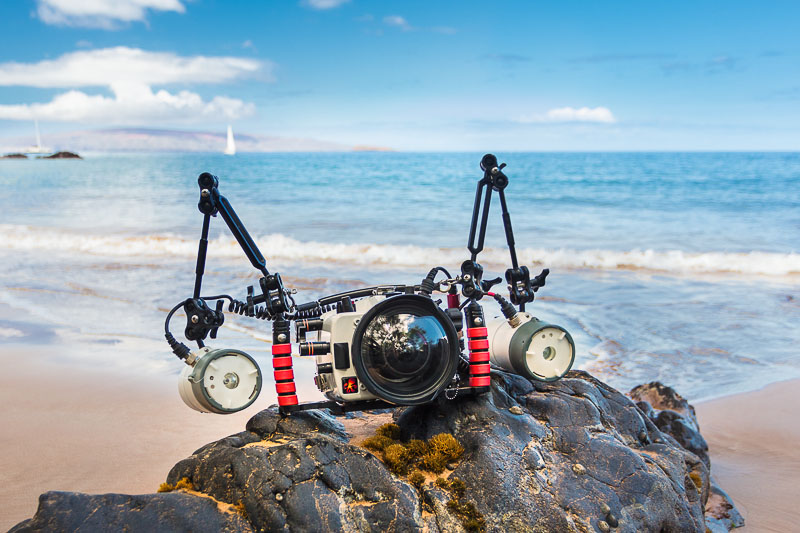
The Nikon D780 is a testament to the photographic community's continued love of DSLR cameras. But Nikon took DSLR cameras one step further with this new release. The Nikon D780 is particularly exciting because the camera represents an elegant hybridization of mirrorless and DSLR technology. This is evident in the D780's new phase-detect AF system in live view that is capable of autofocus tracking.
With a 24.5 megapixel, full-frame sensor capable of shooting 4K video @ 30fps, the Nikon D780 is equivalent to a DSLR version of the Nikon Z6. For underwater photographers looking for diverse AF systems, including an optical viewfinder AF system similar to the D5, the D780 will be a great option.
Whether it's a better option for underwater photography than the slightly cheaper Nikon Z6, it's hard to tell. If you want the benefits mirrorless photography including edge-to-edge focus points, no need for expensive magnified viewfinders, IBIS, and z mount lenses, then the Nikon Z6 is going to be a future-proof option. If you're not quite ready to step out of the DSLR world, then the Nikon D780 is going to be the way to go. In fact, the new phase detect AF system in live view gives it a direct advantage over the Nikon D850.
We took the Nikon D780 diving in the warm waters off the coast of Maui, Hawaii to put the camera to the test and determine just how beneficial a hybrid DSLR-Mirrorless AF system can be for an underwater photographer.
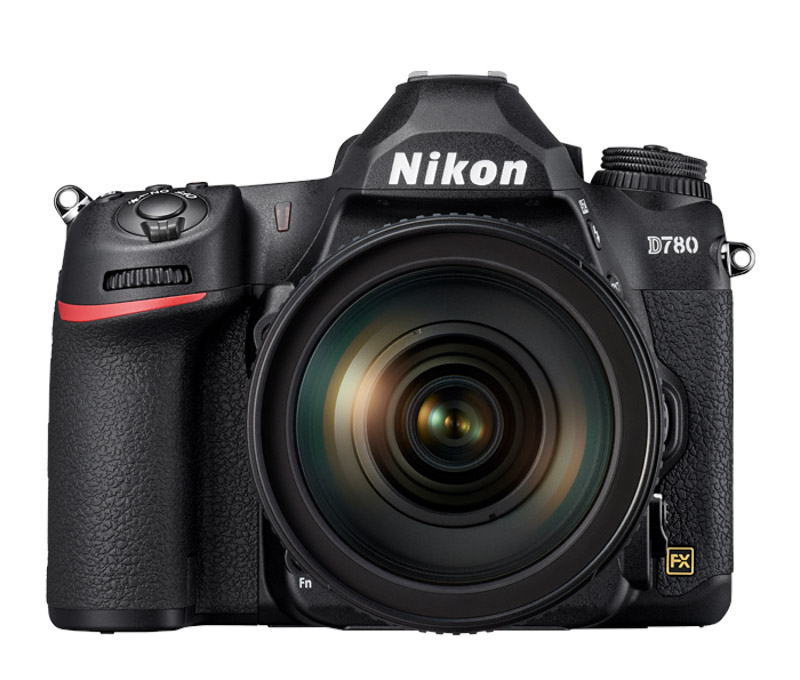
Staus: Available Now!
U.S. MSRP Nikon D780: $2,299.95
Jump to Section
D780 vs D750 | Specifications | Key Features
D780 for Underwater Photo and Video | Who Should Buy? | Underwater Lenses
Underwater Housings | Conclusions
Purchase the Nikon D780 Housing at Bluewater Photo:
Nauticam Nikon D780 Underwater Housing
Ikelite Nikon D780 Underwater Housing
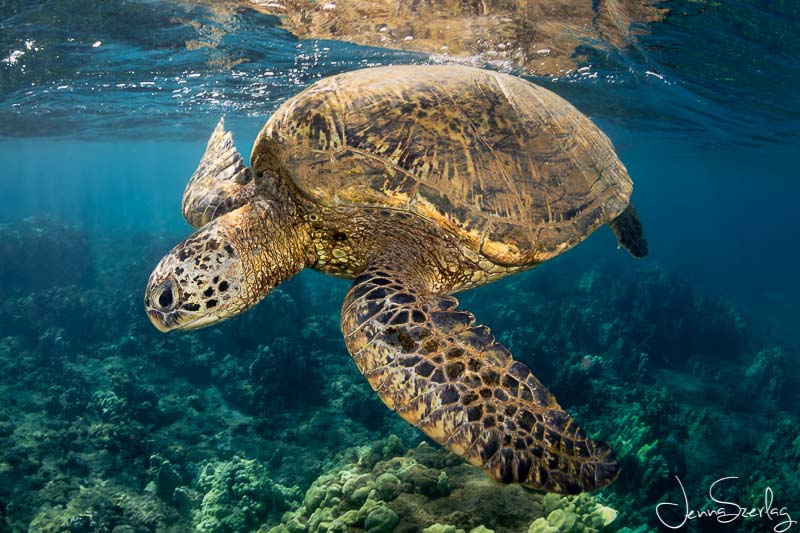
Nikon D780 Compared with Nikon D750
The most exciting update made to the Nikon D750 has been the autofocus system. In live view, the Nikon D780 has the guts of a Nikon Z6 phase detect autofocus system. This means quick focus with AF tracking.
The 24.5 MP sensor itself appears to be the same as the Nikon Z6. It is backside illuminated with dual gain ISO. It is expected to perform much better at higher ISOs and has an improved ISO range of ISO 100 - 51,200.
The D780's video capability is also significantly better than the Nikon D750. It appears that the D780 has inherited video from the Z6 - with an ability to shoot 4K up to 30 fps, with the full width of the sensor.
Burst modes and slow shutter speeds have also been improved on the Nikon D780. The Nikon D780 can shoot 12 fps burst in the silent live view mode. Landscape and astro photographers will appreciate shutter speeds of up to 900 seconds, without the need for a remote trigger.
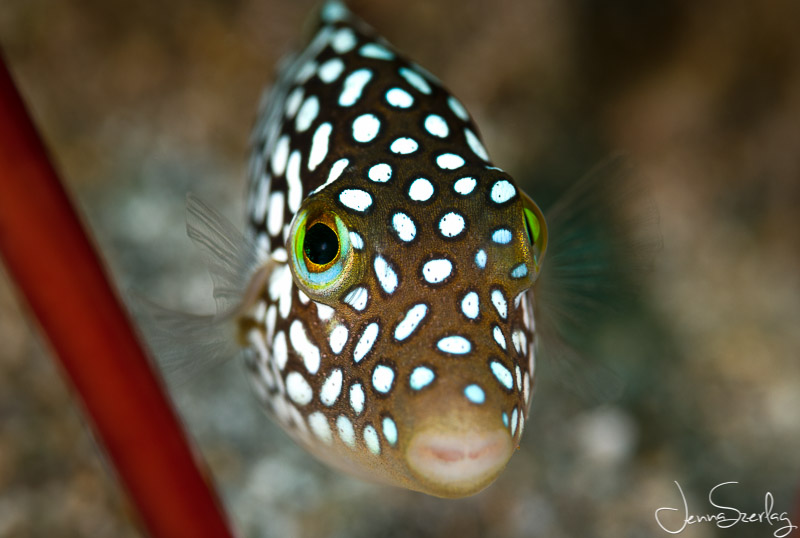
Nikon D780 Specifications
Key Upgrades from the Nikon D780
• Updated 24.5 MP BSI CMOS sensor
• Extended ISO range (now 100-51,200)
• Increased burst shooting rate - now 7 fps and 12 fps in live view (silent)
• Changes in max and min shutter speed (900 sec to 1/8000 sec)
•Live view focus system - new 273 point on-sensor phase detect AF system
• 4K video up to 30fps
•Improved LCD resolution - 2.4 million dots
•Improved battery life - 2260 shots
Key Nikon D780 Specs
• 24.5 full frame BSI CMOS sensor
• Expeed 6 processor
• ISO Range - 100-51,200
• Burst shooting: 7fps viewfinder, 12 fps live view (silent mode)
• 51 AF points (15 cross-type), 273 points in live view
• shutter speed (min/max): 1/18000 sec / 900 sec
• Dual SD (UHS-II) card slots
• Video: 4K up to 30fps. 10-bit N-log over HDMI
• 3.2" 2.4 million dots LCD
• 28 RAW image buffer
•Weather Sealing
• Battery Life: 2260 shots
• Weight: 840g

Nikon D780 Key Features
Body and Build
The Nikon D780 is built like your standard Nikon DSLR. It's durable, ergonomic, and completely weather-sealed. The largest physical change from the D750 is that the D780 has an additional dedicated AF-on button. At 840 grams it's not particularly light weight or heavy. As with any DSLR, it has an optical viewfinder which many photographers still prefer to the EVF of mirrorless cameras due to the benefits of clarity.
Ergonomics Hack - make sure you customize the i menu on the D780 so that all your important controls (e.g., ISO) are a buttons push away.
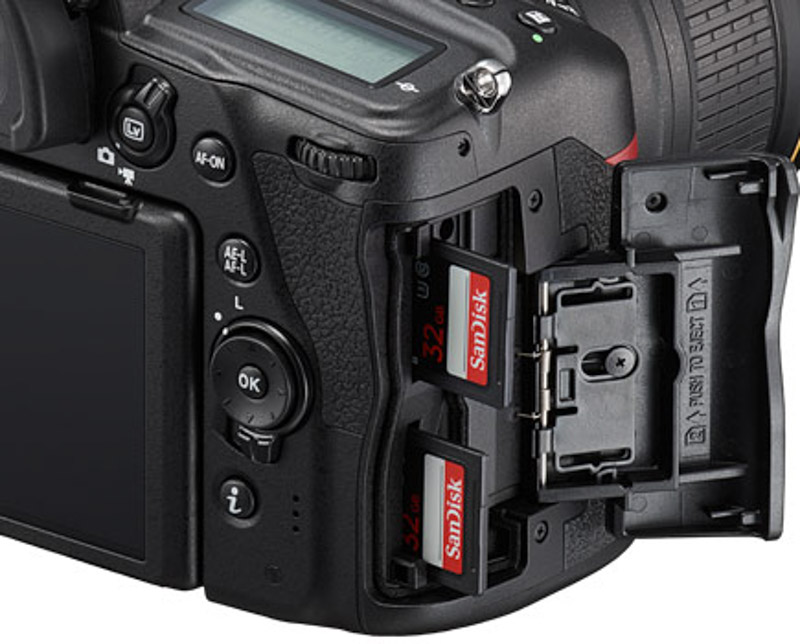
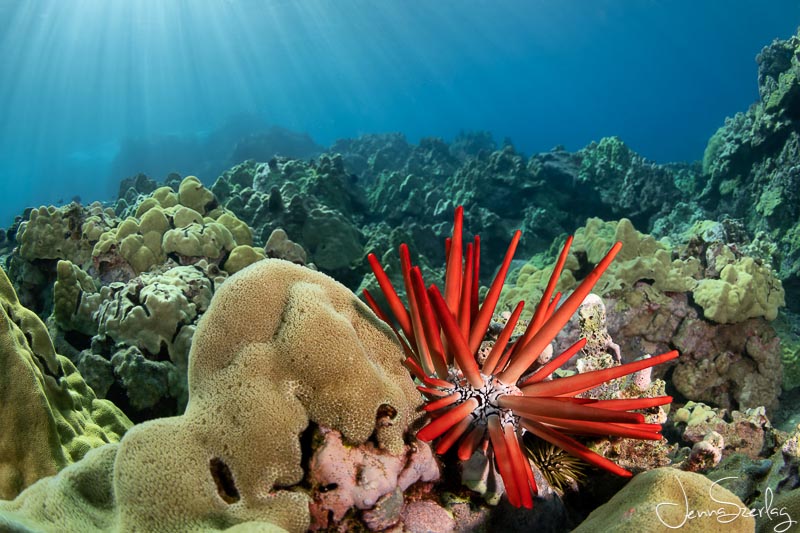
A Radical New Live View System and Improved AF
For the entirety of their existance, DSLRs have been plagued by bad live view autofocus. Because of this, generations of photographers rarely consider using live view systems in their photography. However, for underwater photographers, view finders are difficult to look through, and magnified viewfinders can be prohibitively expensive. This is one of the big reasons why mirrorless cameras are a benefit to underwater photographers. Well, in our experience the D780 is just as good as a mirrorless camera in live view - featuring a 273 point phase detect AF system capable of AF tracking. This opens up a new world of possibilities to underwater photographers and videographers. The new system basically makes the Nikon D780 a hybrid DSLR-mirrorless camera. Beyond of the live view AF, the 51 point AF system through the viewfinder is said to be borrowed from the flagship D5.
The D780 goes a step further by offering the same AF tracking capability in live view as the Z6. We used it extensively while diving in Maui and thought it worked great to track turtle's faces as they swam by. However, you need to be quite close to the animal to track their face, and it isn't always the most accurate. The Sony A7R IV is still going to be the best camera for autofocus tracking on the market.

Better Burst and Expanded Shutter Speeds
For an entry level full-frame DSLR, the D780's burst rate is quite alright at 7 fps. In live view, using silent shutter, it's as high as 12 fps! This should be pretty exciting for underwater photographers that shoot quick pelagic subjects who don't want to spend the extra money on a faster camera.
For landscape and astro photography, the expanded shutter speed range of 900 seconds to 1/8000 seconds is exciting. Photographers won't need to use a remote trigger for long exposures under 900 seconds!
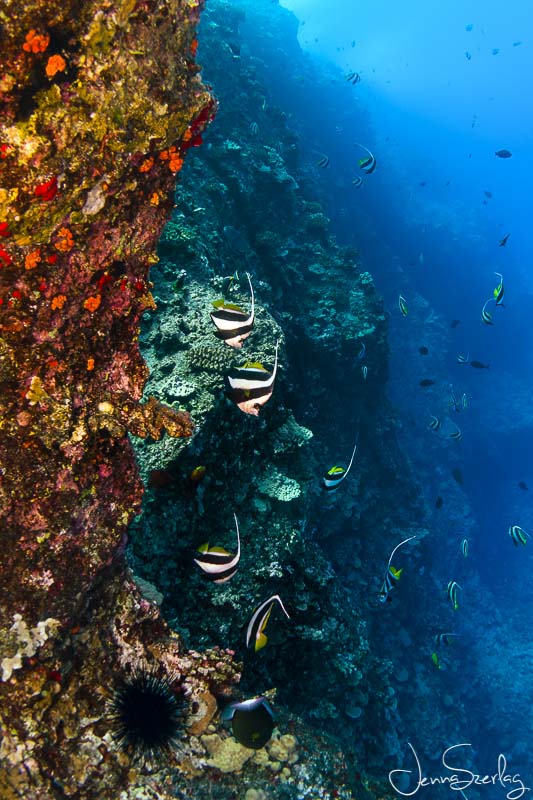
Improved Video Capability
The video capability of the Nikon D780 is one of the most exciting features it has to offer. At 4K resolution up to 30 fps, it's a serious upgrade from the outdated D750. The video capability and quality is similar to the Nikon Z6 which uses the full width of the sensor to shoot 4K - producing very detailed video. The excellent live view AF system will contribute to the great continuous AF in video mode. The D780 should also have improved color compared to it's predecessor. Finally, the Nikon D780 is capable of shooting 10-bit N-log or HLG picture profiles - which preserve detail after processing. It is, however, important to note that the D780 doesn't have in-body image-stabilization, which is a huge benefit of the Nikon Z6.
Overall, we found that video with the Nikon D780 was similar to the Nikon Z6, as expected. This makes it one of the best cameras on the market for underwater video - despite not having IBIS.
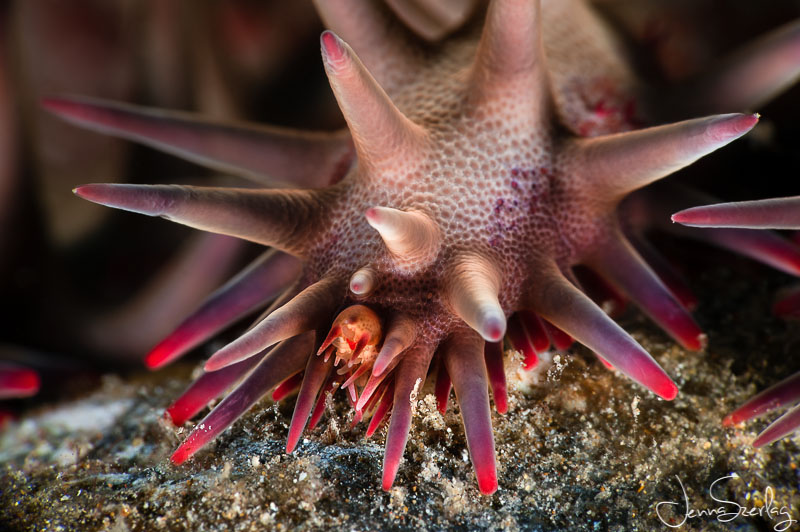
Battery Life
What can we say....the battery life is great! At 2260 shots, it's rated almost 7 times longer than Z series cameras! For underwater photographers and videographers that means more shooting time underwater and less worry about having to change batteries topside. In fact, it should be possible to get multiple days of diving on a single battery!
Using live view, the battery life is going to be reduced and more similar to shooting with the Nikon Z6. However, we were able to still get easily 3-4 dives out of one battery. The more you shoot through the viewfinder, the more dives you can get out of the battery. This is a big positive for the D780 over the Z6 - especially for photographers that might be diving in remote locations without an easy way to change batteries.
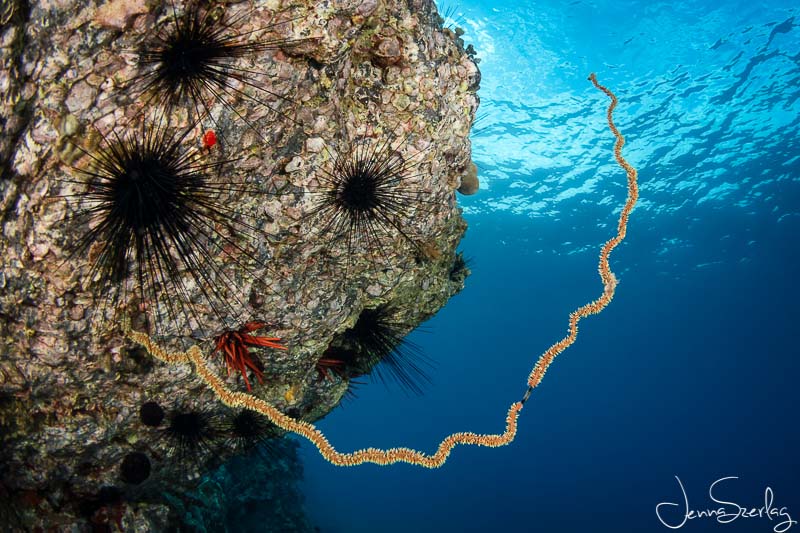
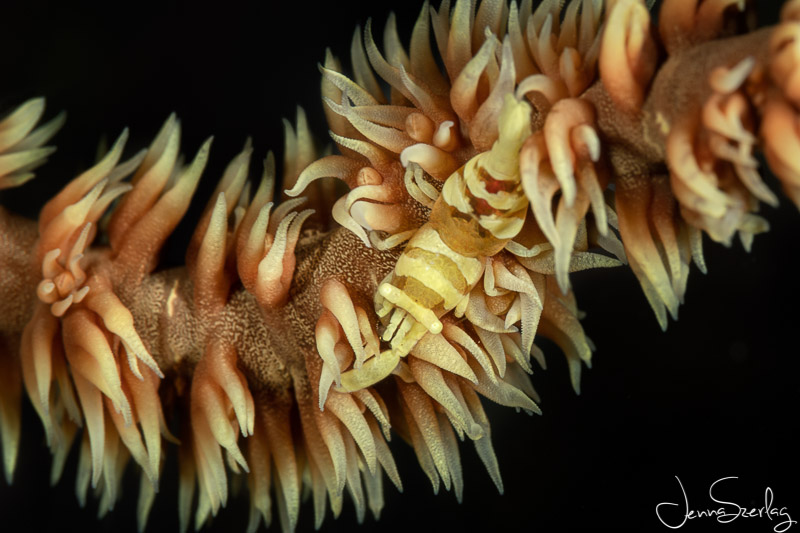
Nikon D780 for Underwater Photography
The Nikon D780 is a very exciting DSLR for underwater photography. With a vastly improved live view AF system, it is a cross between a DSLR and mirrorless camera. Users will reap the benefits of both designs. With AF tracking and phase detect AF, it is a good camera for underwater photographers that want to track their subjects and don't want to use a small viewfinder. For photographers that like the clarity and dynamic range of an optical viewfinder, they'll get that too....along with an excellent 51 point AF system. Not to mention the benefits of long battery life...
The image quality from the Nikon D780's sensor has proven to be excellent for a mid range full-frame DSLR, as it is likely tried and tested with the Nikon Z6. Improvements in low light capability should be noticeable which will be welcomed especially by cold water divers.
We had an awesome time shooting the Nikon D780 in Hawaii. It withstood a wide range of dive conditions and the Nikon 8-15mm was perfect for the deep blue waters of Molokini. We loved the Nikon105mm for shooting macro patterns of pencil urchins. For a full frame (and especially Nikon) shooter, the D780 is an easy transition. Its ergonimics are excellent and the image quality holds up to other full frame Nikon cameras of this generation.
Ultimately, the Nikon D780 gives photographers who aren't ready to leave the DSLR world for mirrorless cameras, time to adjust to a changing world. It's certainly a worthy upgrade from the D750 that places it on the other side of the mirror from the Z6.
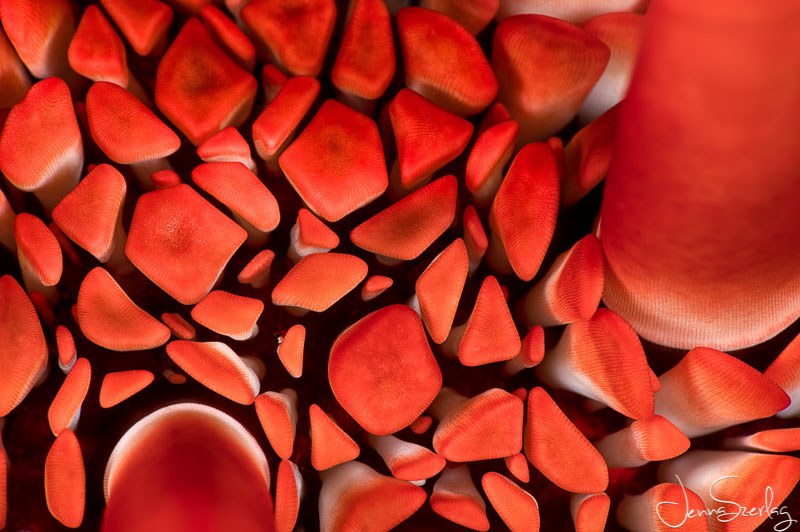
Nikon D780 for Underwater Video
The Nikon D780 just might be Nikon's best DSLR for Underwater video. It offers 4K video using the full width of the sensor (downsampled from 6K). This ensures a higher level of detail than normal 4K video. Nikon's colors have improved quite a lot in their video from previous generations of the camera. The D780 also offers 10 bit logarithmic recording which should please anyone who likes to post process their video to bring out as much detail as possible. Finally, the phase detect live view AF system is one of the best on the market for underwater video.
Compared to the Z6, the Nikon D780 is similarly capable when it comes to video. However, it does not have any in-body image-stabilization. For this reason we recommend the Z6 over the D780 for underwater video.
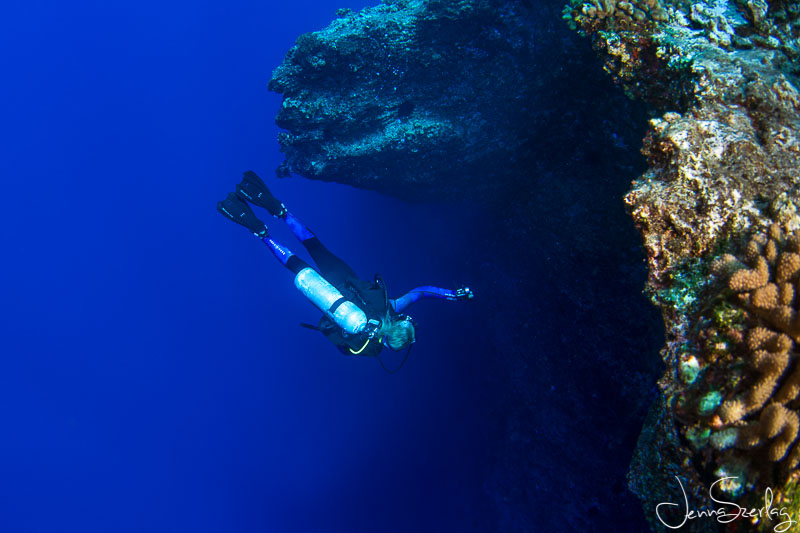
Who Should Consider Purchasing the Nikon D780?
The Nikon D780 is the perfect camera for any underwater photographer looking to step into a full frame system and doesn't want to go mirrorless. The D780 has a huge selection of F mount lenses with plenty of great options for underwater creatives. It offers an amazing AF system, including a groundbreaking AF system for live view. This makes it a good upgrade for DSLR users who are looking to use their LCD underwater and don't want to be hindered by slow AF. The D780 doesn't quite have the resolution of the D850, but the sensor is tried and true and brings truly excellent image quality to the table. The video is also the best of any Nikon DSLR. So for DSLR users that want a Nikon with good video, this is the camera for you.
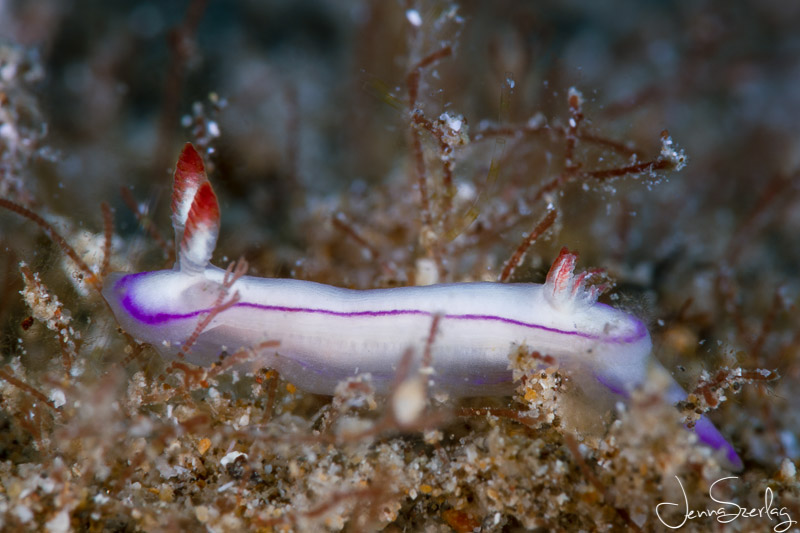
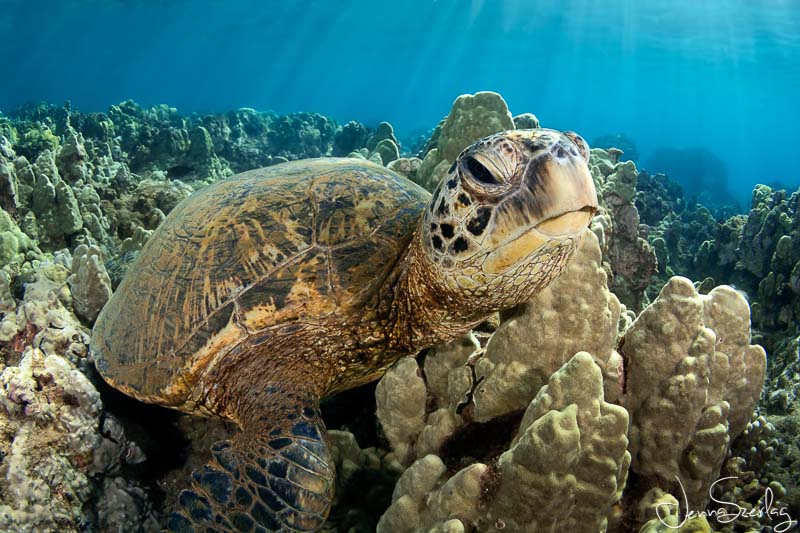
Best Lenses for the Nikon D780
Macro
- Nikon 60mm 2.8G Macro: Great all around lens and especially great for blackwater diving
- Nikon 105mm 2.8G VR Macro: Great for small and shy subjects, giving you more working room than the 60mm and essential for super macro
- Nauticam Super Macro Converter: the Nauticam super macro converter (SMC-1) is a wet diopter perfect for taking sharp super macro images. In fact, it is the strongest, sharpest diopter on the market. For the best super macro results, use it with the Nikon 105 mm 2.8G VR lens.
Wide Angle Fisheye
- Nikon 8-15mm: Get creative with the full circular image, or zoom in for a more standard fisheye lens. Read the Nikon 8-15mm FX AF-S f/3.5-4.5E ED Zoom Fisheye Review by Mark B. Hatter.
- Nikon 16mm 2.8 Fisheye: Also a great lens, and a popular choice for full-frame
Wide Angle Rectilinear
- Nikon 16-35mm 4.0: Great for large animals and extremely sharp lens, but requires a larger dome to get sharp images
- Nikon 20mm 1.8G: Small, compact, sharp, doesn't need as big a dome as the 16-35 mm
For further reading, check out Bluewater's guide to the best Nikon lenses for underwater.
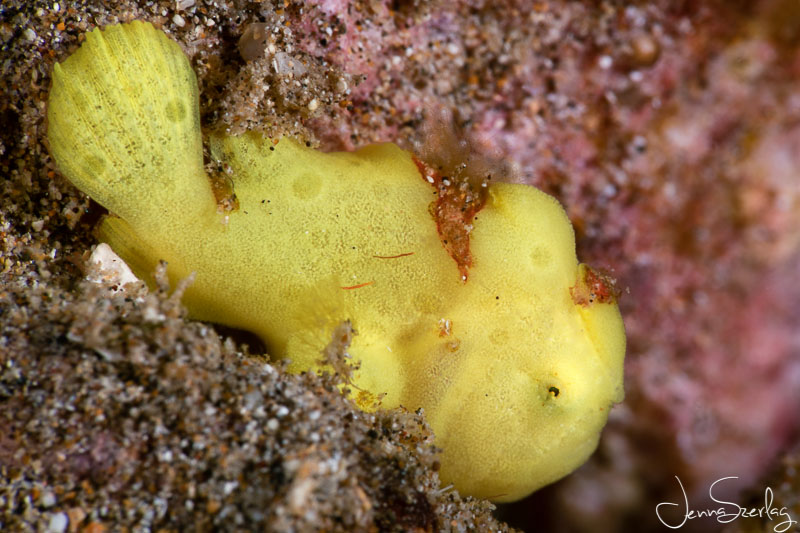
Underwater Housings for the Nikon D780
So far there is an excellent Nikon D780 Ikelite housing on the market available at Bluewater Photo! Ikelite is one of the top makers of polycarbonate underwater housings. Their housings are very intuitive, user-friendly, and generally lighter underwater which makes for better buoyancy. We also anticipate a housing from Nauticam. Nauticam is one of the world's top makers of aluminum housings. Their housings are elegantly engineered so that all controls are within reach of the handles.
Ikelite Nikon D780 Housing
Ikelite is one of the world's top housing manufacturers of ABS-PC polycarbonate housings. The Ikelite Nikon D780 housing is easy-to-use and very lightweight underwater compared to other manufacturers. Its a very durable housing and uses Ikelites elegant dry lock port system. A vacuum valve comes with the housing already installed! This will provide extra protection from floods in the harshest dive conditions. The housing is ergonomic and all controls are easy to reach and operate. Did I mention that the housing is less expensive than the camera body? If you're new to underwater photography....that almost never happens!
We personally took this housing diving in the warm waters off Maui, Hawaii. Underwater Photography Guide editor, Jenna Szerlag, commented that "the Ikelite D780 housing was super easy to use, a lot of fun, and second nature - being a full-frame DSLR shooter."
Available Now at Bluewater Photo!
Nauticam Nikon D780 Housing
Nauticam is a leader in machined aluminum underwater camera housings. The Nauticam NA-D780 housing for the Nikon D780 is an ergonomic, elegant, and effective housing designed to provide full functionality to the D780 underwater. The housing is crafted from high quality aluminum and all controls and dials are within reach from the handles. The housing is depth rated to 100m. All buttons are clearly labeled; it includes two fiber optic ports and a leak sensor. The rotating housing latch is secure and easy to use.
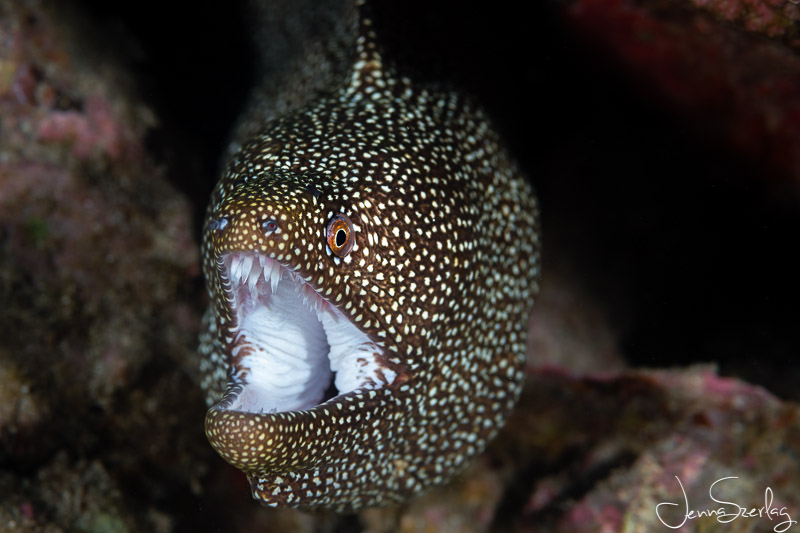
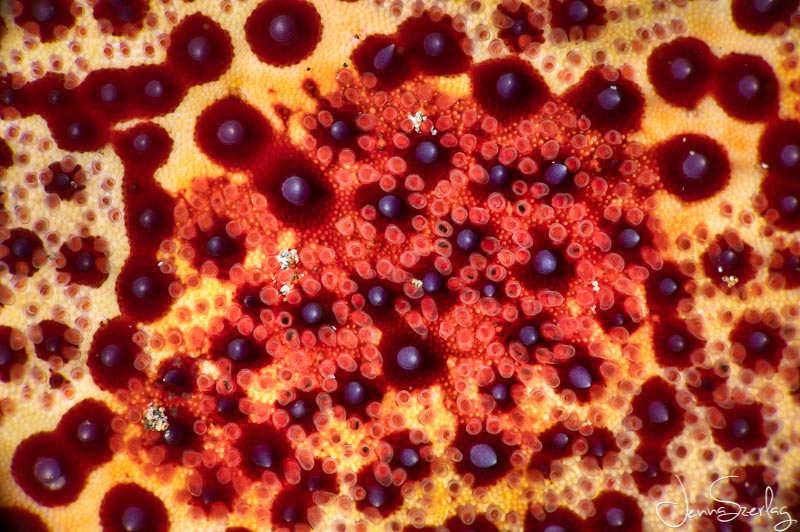
The Nikon D780 is truly one of the most exciting DSLR camera offerings from Nikon in a long time. With phase detect live view AF migrated from Nikon's mirrorless cameras, the D780 is a revolutionary mix of DSLR and mirrorless technology. Underwater Photographers are finally going to have a solution to poor live view AF in a DSLR. The video specs are excellent and the Nikon D780 will be Nikon's best DSLR for video yet! For any underwater photographer or videographer who is looking to move up to a full frame DSLR with great all-around performance for a reasonable price, the Nikon D780 just might be the best option out there.
RECOMMENDED ARTICLES
SUPPORT THE UNDERWATER PHOTOGRAPHY GUIDE:
The Best Service & Prices on u/w Photo Gear
 Visit Bluewater Photo & Video for all your underwater photography and video gear. Click, or call the team at (310) 633-5052 for expert advice!
Visit Bluewater Photo & Video for all your underwater photography and video gear. Click, or call the team at (310) 633-5052 for expert advice!
The Best Pricing, Service & Expert Advice to Book your Dive Trips
 Bluewater Travel is your full-service scuba travel agency. Let our expert advisers plan and book your next dive vacation. Run by divers, for divers.
Bluewater Travel is your full-service scuba travel agency. Let our expert advisers plan and book your next dive vacation. Run by divers, for divers.




